It’s a pretty common fantasy, from wage slaves in cubicles to CEO’s in corner offices, the dream of chucking it all to buy a vineyard and make wine is pervasive and sometimes persuasive. Few can do it, but if you have enough money and are willing to risk it, you can probably find a farmer willing to take a nice profit on a piece of land. Check out the lawyers and dotcom millionaires in the Napa Valley and look up a former Swiss banker in the Agly Valley by the name of Marcel Buhler.
There may be other dreamers in the banking houses of Zurich, but Marcel actually did it. He took off the tie, left the office, and is making wine the way he wants. Good move. Good wine.
I first met Marcel in January of this year when he was pruning vines and I was looking for a story. He taught me about pruning, I made some photos.
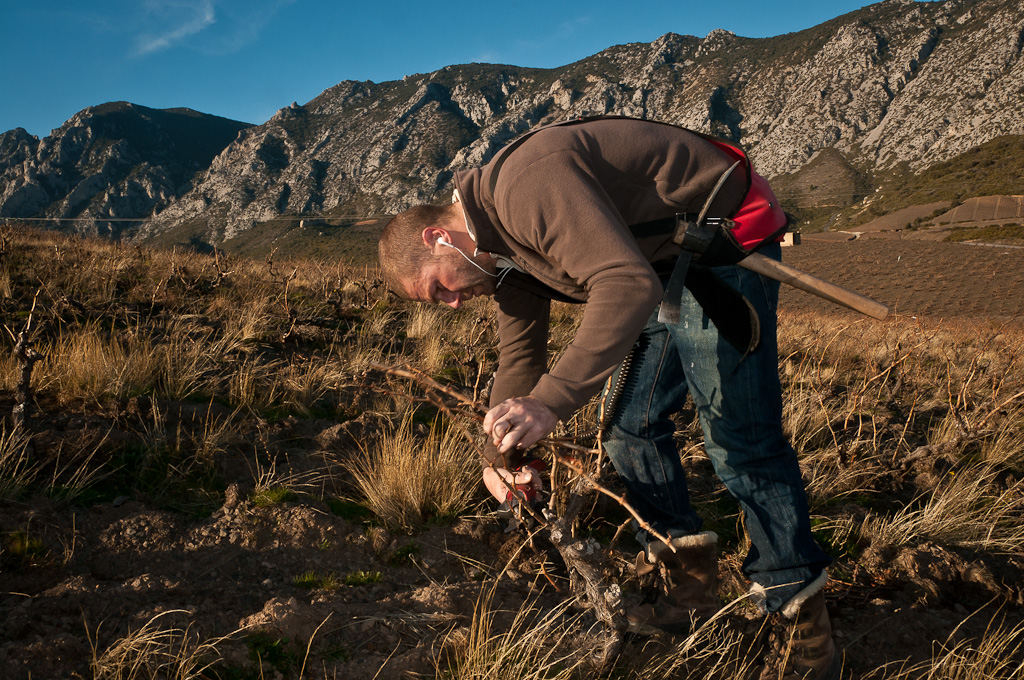
Now it’s the beginning of September and the picking has begun, white wine first, grenache blanc, grenache gris, maccabeu and a bit of carignane blanc. Marcel and a crew of seven or eight, including his wife Carrie Sumner, are working a small hilly vineyard between Maury and St. Paul.
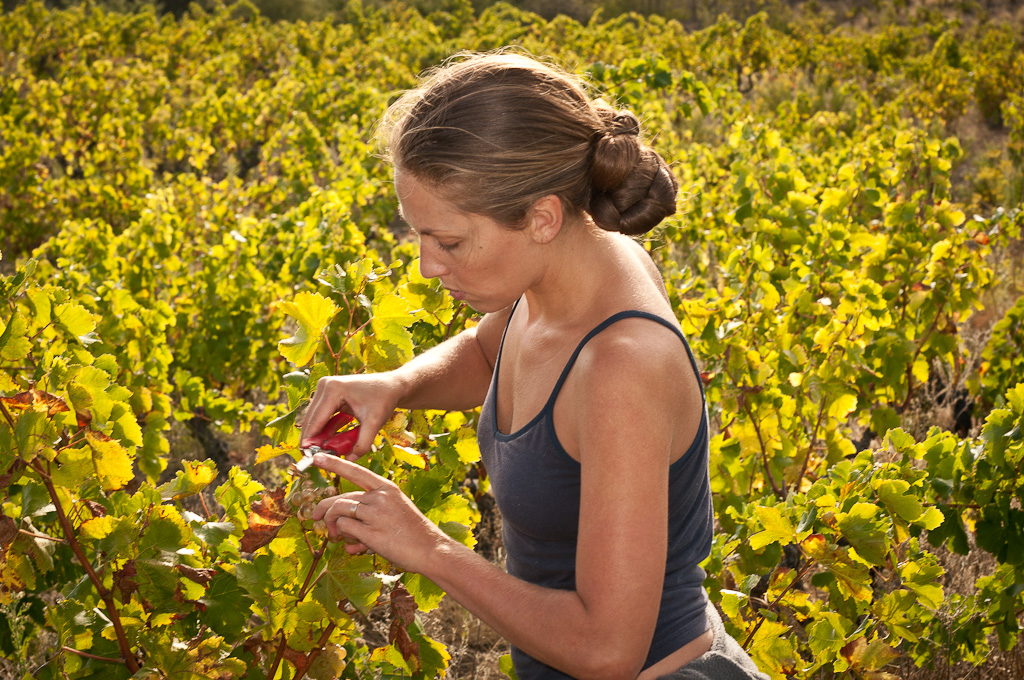
Picking is done in the morning, starting around 7 AM and usually finishing by lunch although Marcel has been known to push ahead, skipping lunch when he can finish a vineyard by early afternoon. He is intensely focused, listening to music and blocking out as many distractions as possible. A crew that works with minimal direction and zero friction is essential and seemed to be a reality on the days I went out with them. The workers come from around Europe – Spain, Italy, Czech Republic – and the miracle of communication through the mélange of languages and accents is very impressive. They are, as you’d expect, mostly young, pursuing the romance, sleeping in cars, living free on the road. I can remember.
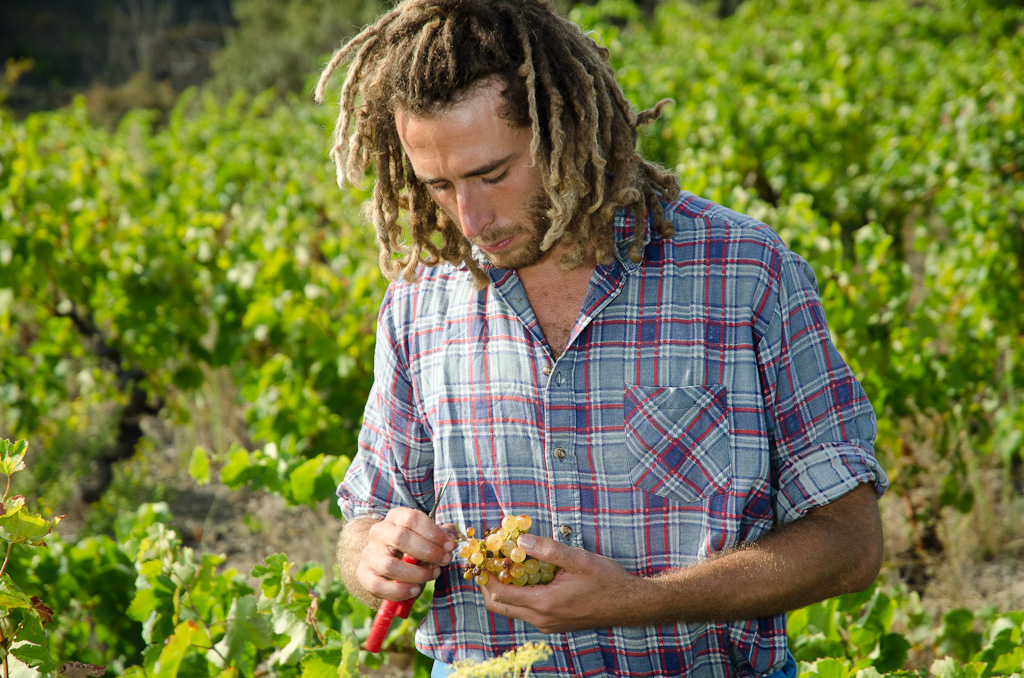
The method calls for cutting away the dried out berries that retain too much sugar for the blend. Doing this in the vineyard means the picking will take a little longer, but there’s no place in the production line to make this happen. It also means he needs pickers who are experienced and careful and since these workers are transient, every year is a new ballgame.
The grapes are collected in bins known as cagettes, which are trucked to the winery. This bit is important because of what comes next.
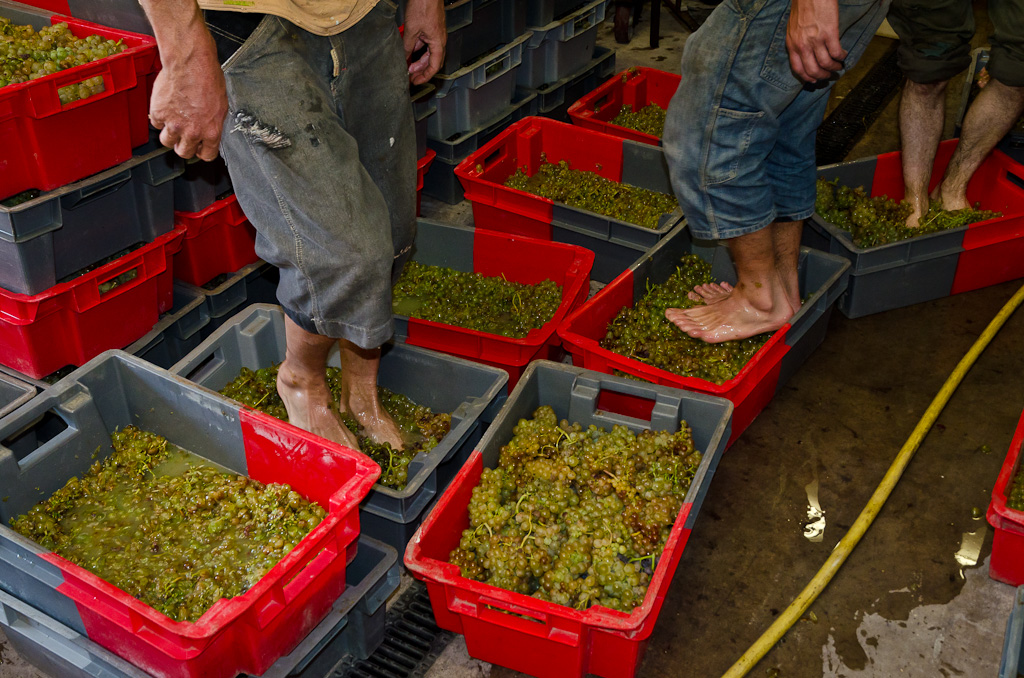
Yep, they do it with their feet. I’m thinking isn’t this sweet and pure and terribly romantic until Marcel explained the reasons for it. In his white wines, he wants to retain some of the flavor from the stems, but not too much. Putting the whole batch in a crusher would extract more from the stems than he wants in the wine. Crushing this way does not damage the stems, thereby limiting the contribution to the final wine.
Now I know exactly what you’re thinking, what does that feel like? Well, that’s exactly why I had to try it.
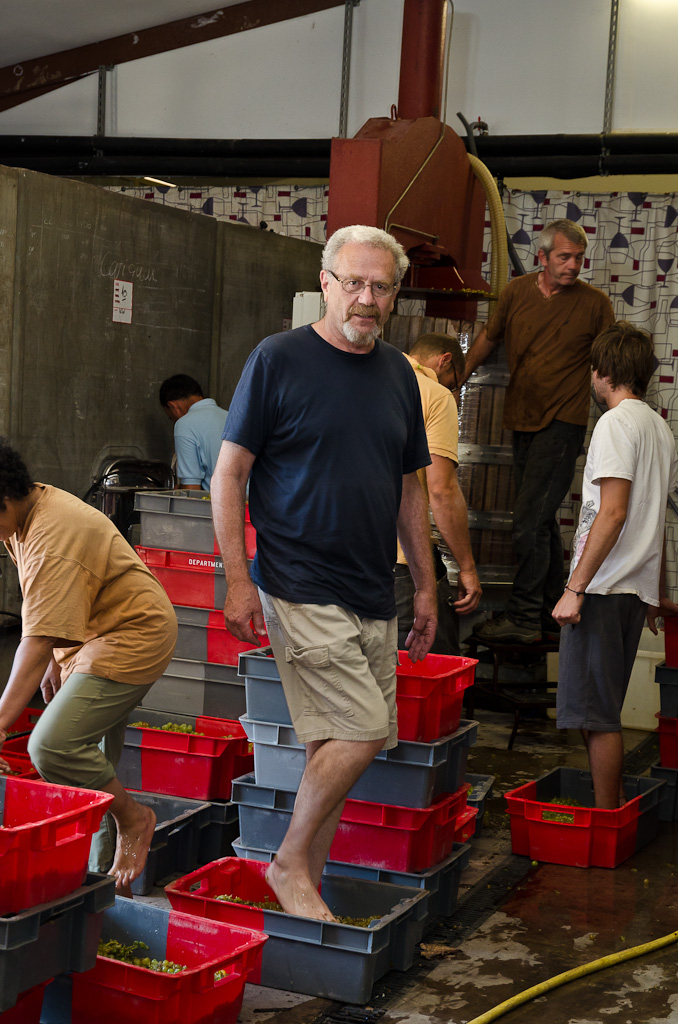
First off the grapes are warm, they’ve just come in from a very hot vineyard, and they’re tough. Those little maccabeu guys are meaty and slippery and it takes a while to get them crushed, big feet are a definite advantage in this business. Unlike dancing, it’s OK to look at your feet while doing this and it’s a good idea because as the juice increases, the berries become more mobile and harder to trap. Finally, there’s a lot of sugar in there, so it gets a bit sticky. This is definitely not the sensual experience of a lifetime and the main attraction for the workers just may be getting to take your shoes off and wash your feet after a morning in the vineyards.
From the feet to the press where the juice that flows free is pumped over the must several times before being pumped into a chilled plastic storage tank where it is left to rest and for the impurities to settle out. Temperature is kept below the point where fermentation can occur. Once the impurities have settled to the bottom, the juice is racked out to barrels for fermentation. Natural yeast, no filtering or fining.
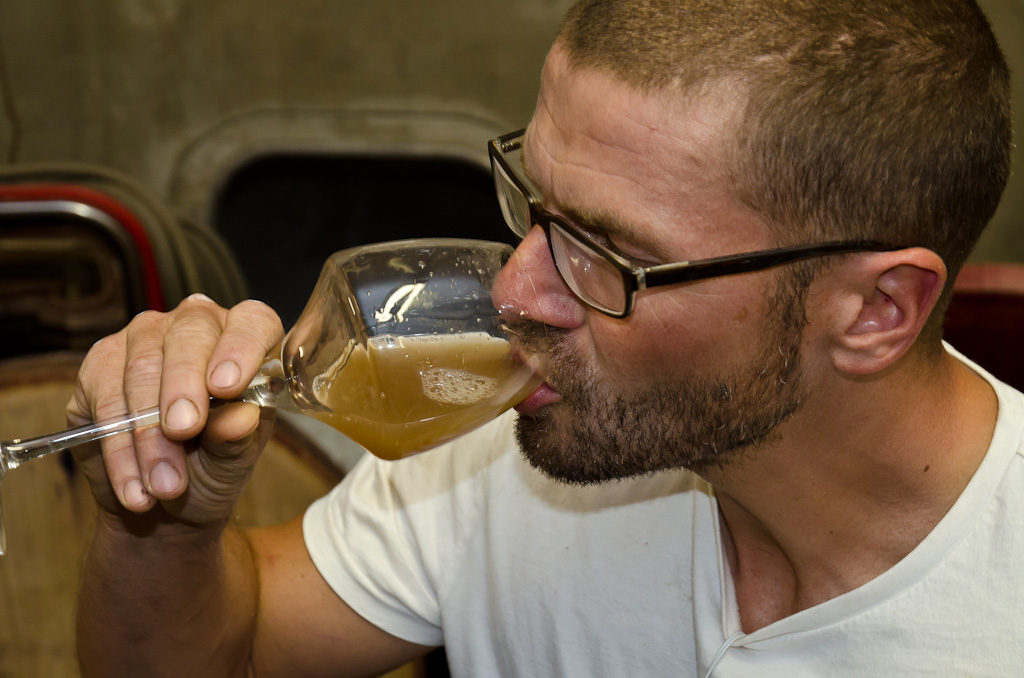
It’s important to remember that this is an outline of Marcel’s methods; along the way he will make decisions based on testing, tasting and the kind of wine he wants to make. Others will do it differently, with different goals in mind, different resources, or simply because that’s the way they learned to make wine. I’ll look at a couple of different approaches in this blog and we’ll check back in with Marcel at different stages of the process.
